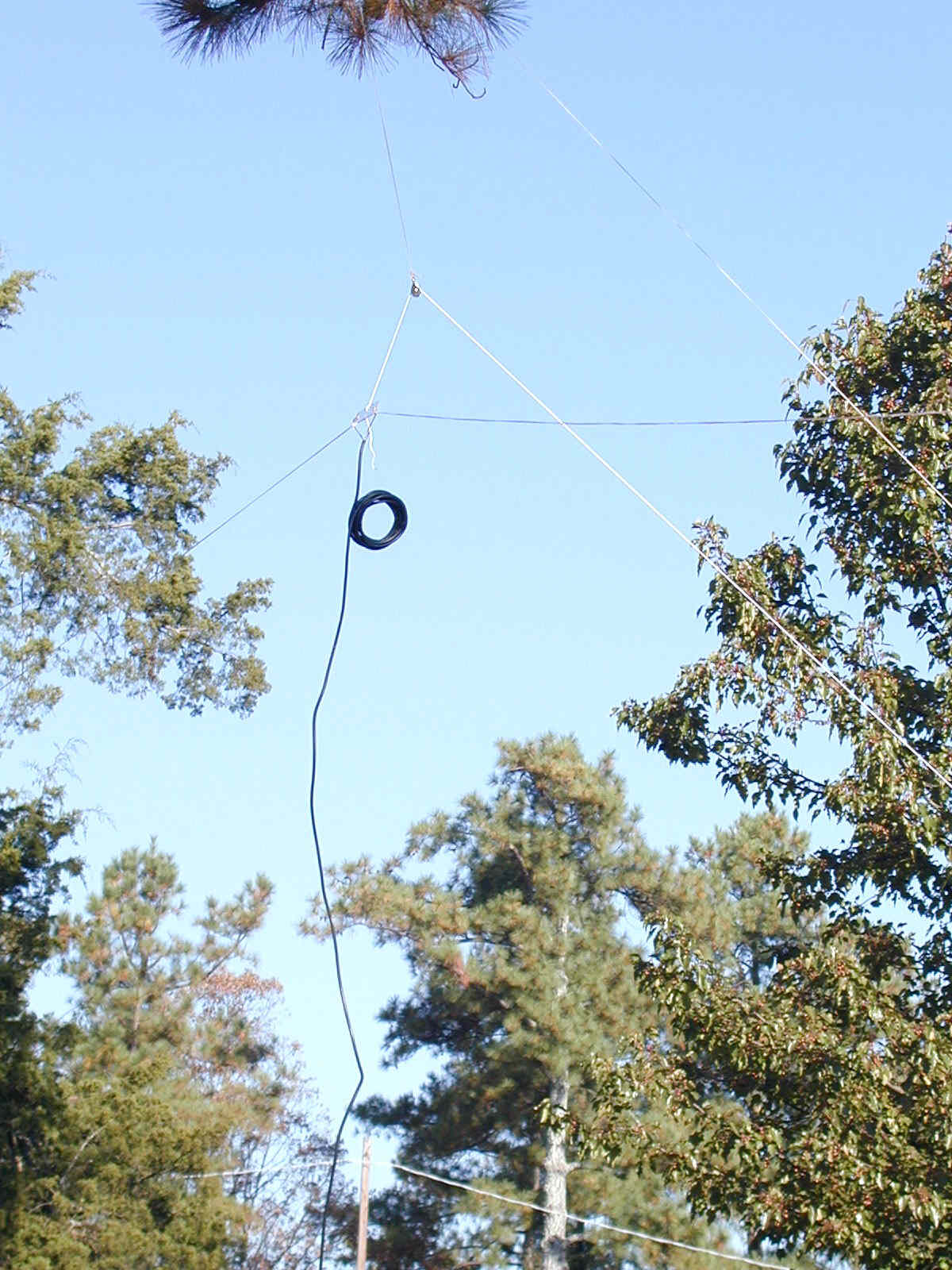
JOTA 2001
Harvest, Alabama
This was my first year in participating in the Boy Scouts JOTA (Jamboree on the Air) event.
A Visit to Home Depot
We set up a station at the Ford's Chapel United Methodist Church near Harvest, Alabama, where the Scouts were camping. The night before the event, I went down to the local Home Depot store and picked up a few items to build a wire antenna. As I was looking for some wire, I heard a roll of speaker wiring calling out to me. It occurred to me that I could use common speaker wire to build a multi-band antenna that would work on the 40, 20, and 15 meter bands. The antenna tuner could be used to tune the other bands if needed.
At the Camp Site
I showed up early Saturday morning with my radio equipment, antenna tuner, and the low cost Home Depot special accessories for the antenna. Since I forgot my tape measure, I had to borrow one from the Scout Master. It took about 40 minutes to get things set up including the multi-band dipole that had to be constructed. The dipole antenna was cut for 40 meters and the second wire on each side of speaker wire for the dipole was notched for the length required on 20 meters. The 40 meter section was used as a harmonic antenna on 15 meters. We ended up with a Tri-Band dipole made out of speaker wire. The Scouts were amazed that we could work stations all over the country using only speaker wire for an antenna. It was a great lesson on how to be thrifty with minimal materials. In several cases, I heard them tell other Scouts that we made an antenna out of speaker wire and it really surprised them how well it worked.
15 meters seemed to be the best band with the least noise and congestion for the JOTA 2001 camp site radio operation.
The Antenna
Here is a picture of our Tri-Band (40-20-15 meters) speaker wire antenna we constructed at the camp site. An RF choke was made by several turns of coaxial cable near the antenna feed point to minimize feed line radiation. It took much longer to get the dipole up in the tree compared to all the other work. Finally, we tied a big Crescent wrench to the pulley and got it the first time. We just needed a little more weight to pull the line down on the other side of the branch. We used the pulley to raise and lower the antenna for adjustments, but it was not necessary since it worked great the first time.

The Station
Here is a shot of the station (Radio and Antenna Tuner) propped up by a couple lawn chairs and a piece of plywood for the table. These Troopers took no time to learn how to HAM IT UP on the airways making contacts with other Scout Troops around the country. Note that the wire coming out from under the hood on my Jeep is actually a battery jumper cable connecting the battery to power the radio. In the background, you can see the results from the battle of the Jeep and the Arrow antenna. The handheld Arrow antenna was no match for the rubber tires on the Jeep. Notice how the boom on the antenna has a big bow in the center. One of the elements were sacrificed to mother earth in the unfortunate incident.
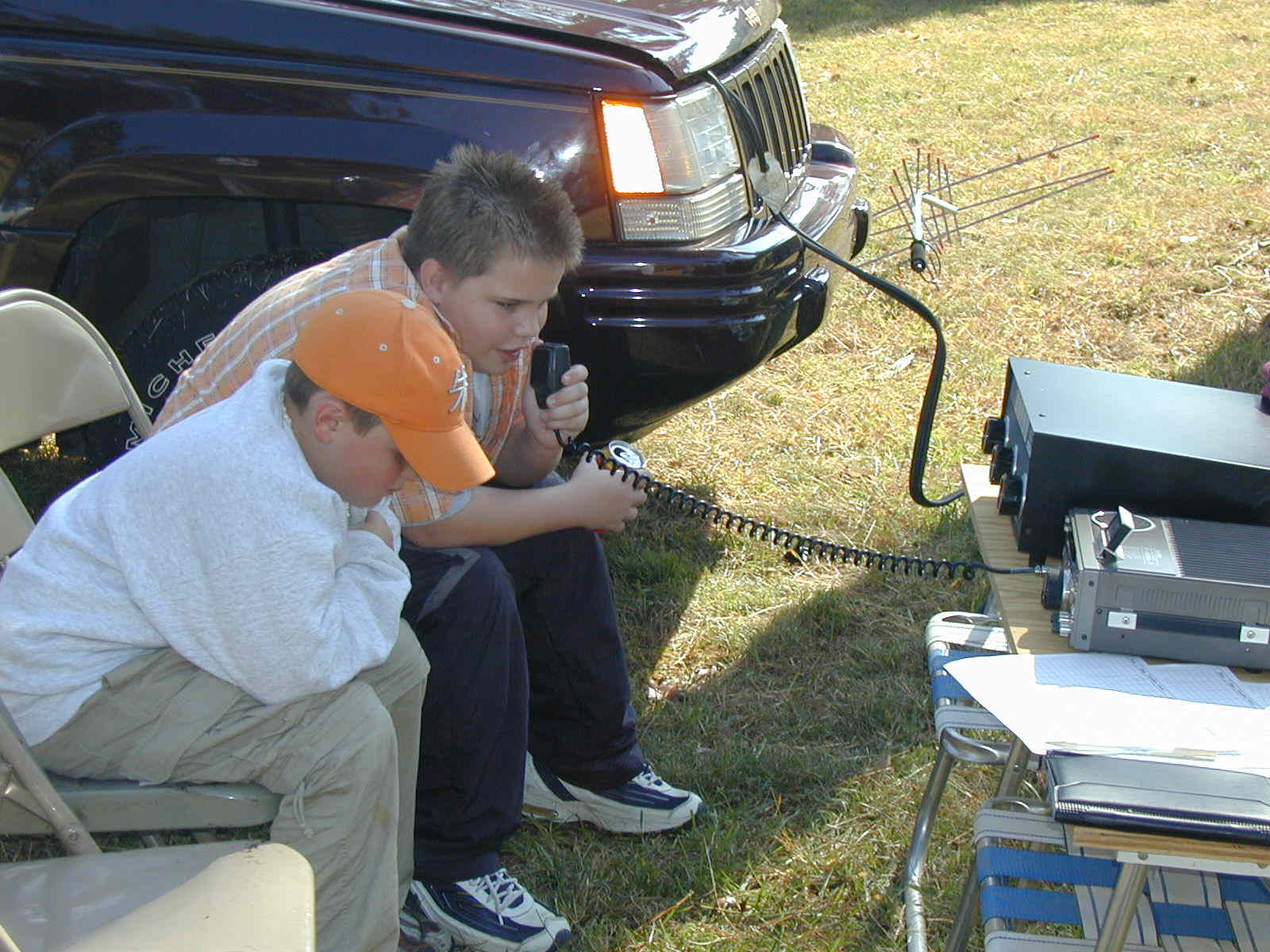
Making Contacts
Here are some Troopers passing the microphone around as they work another Scout Troop in Colorado. Their camp site can be seen in the background.
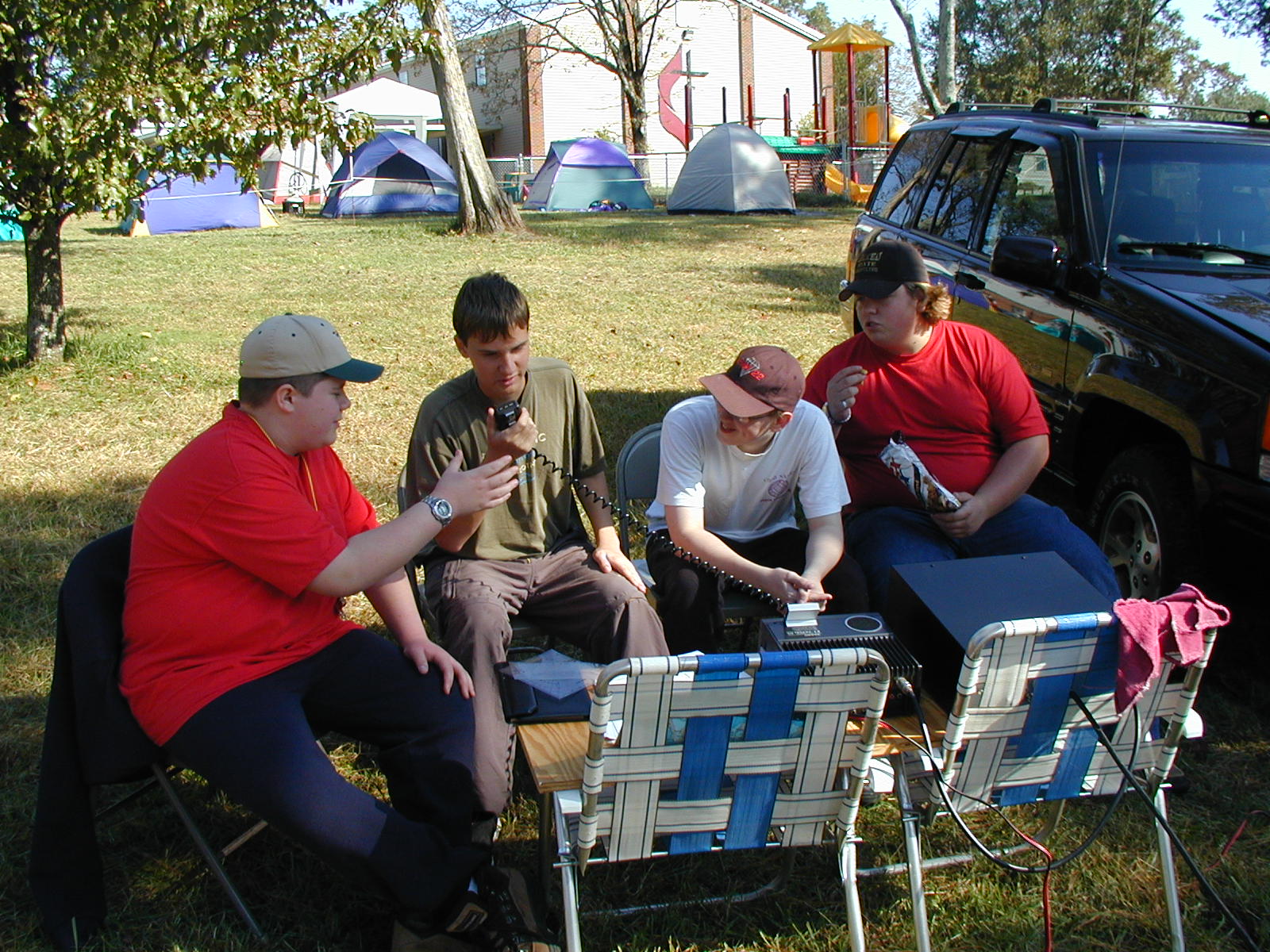
Hey, these guys sound funny
Here are some Scouts listening to a station in the United Kingdom, thinking to themselves that the other guys have a funny accent. I wonder how funny these Southern Boys sound to them?
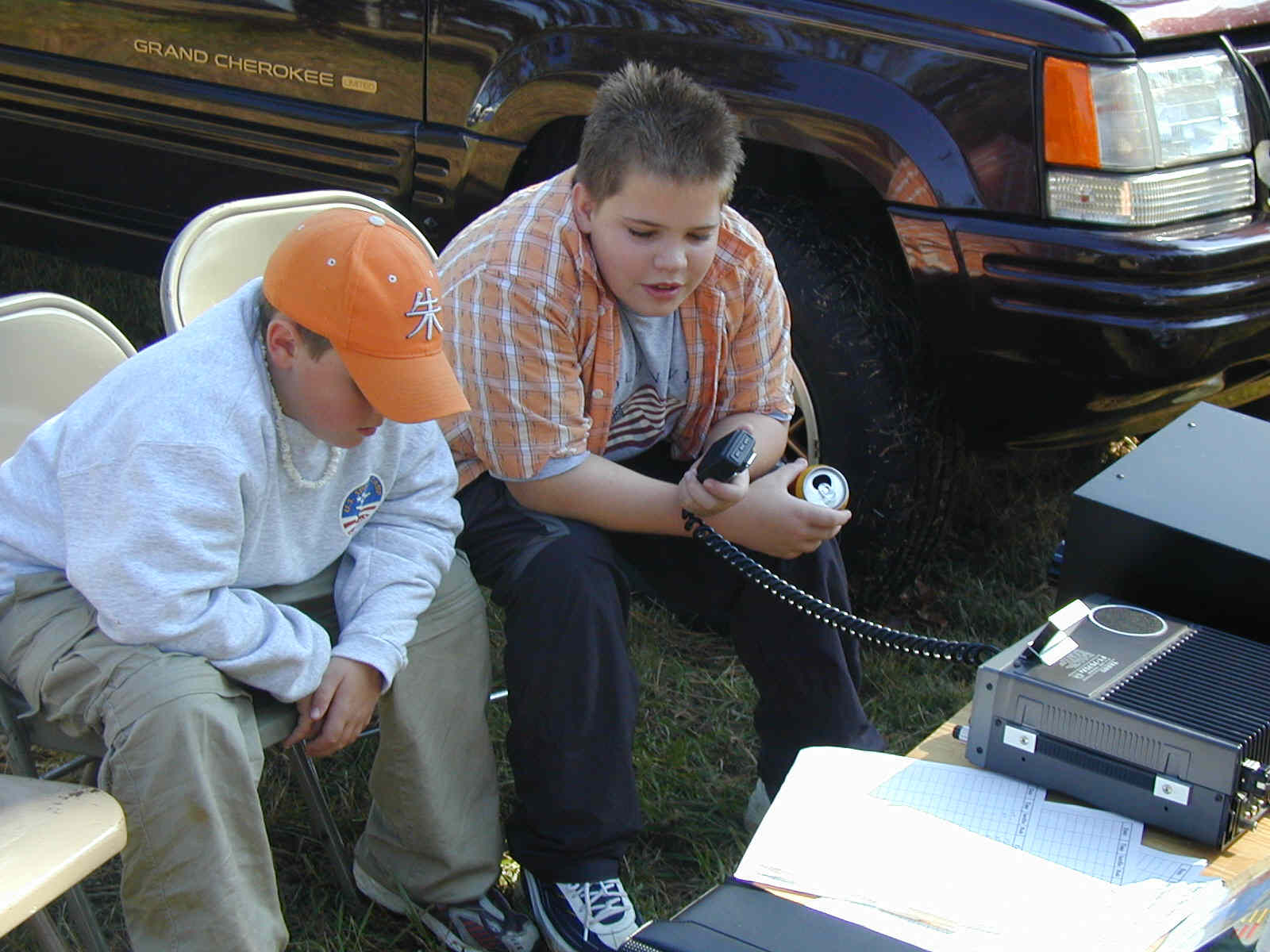
Can you spot a HAM
It looks like a few potential future HAMs are in this picture. Two of the older Scouts are assisting a younger Scout on how to work the microphone as one HAMs it up to the camera.
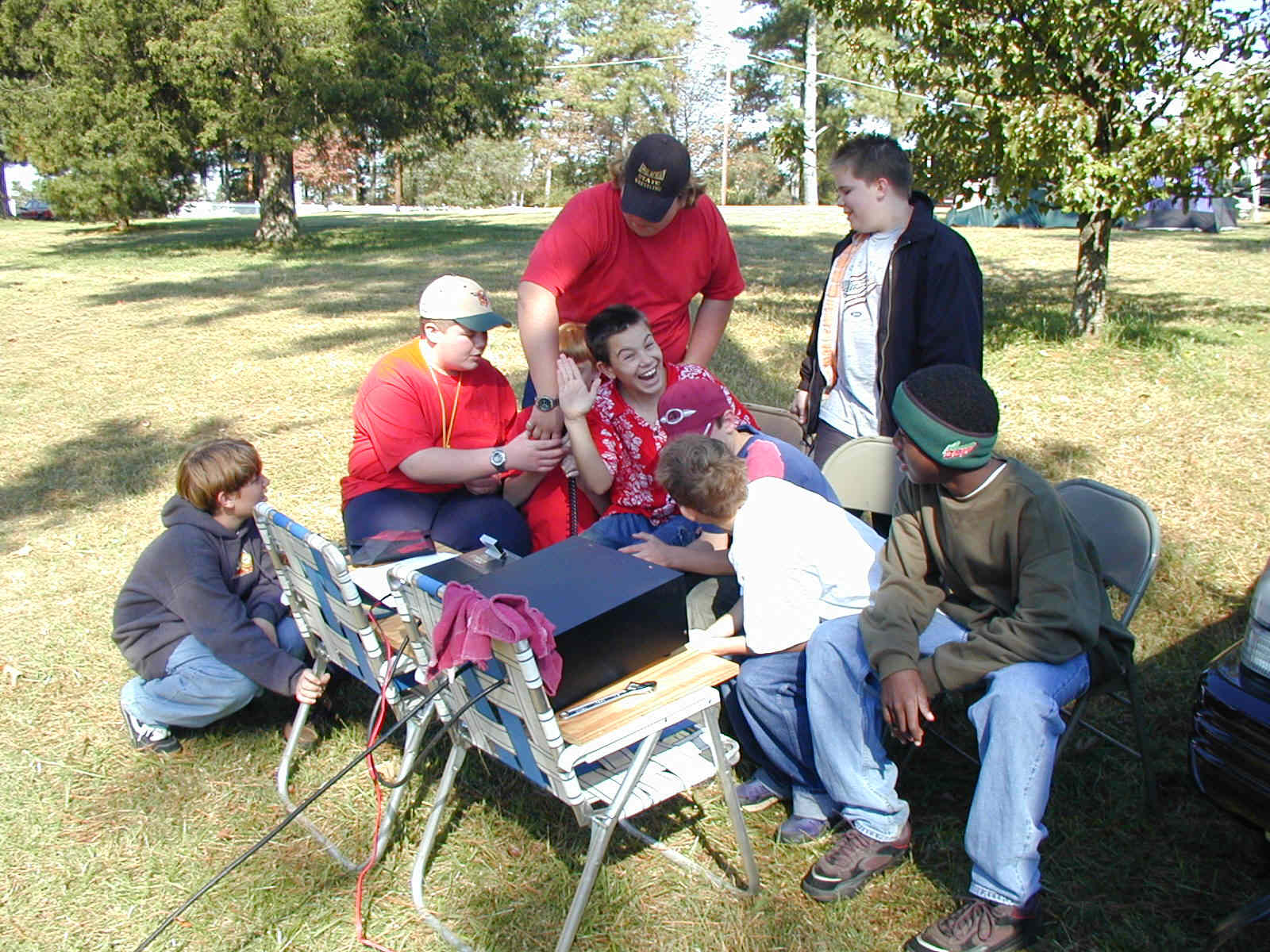
Encouragement
One of the younger Scouts is being encouraged to get on the air.
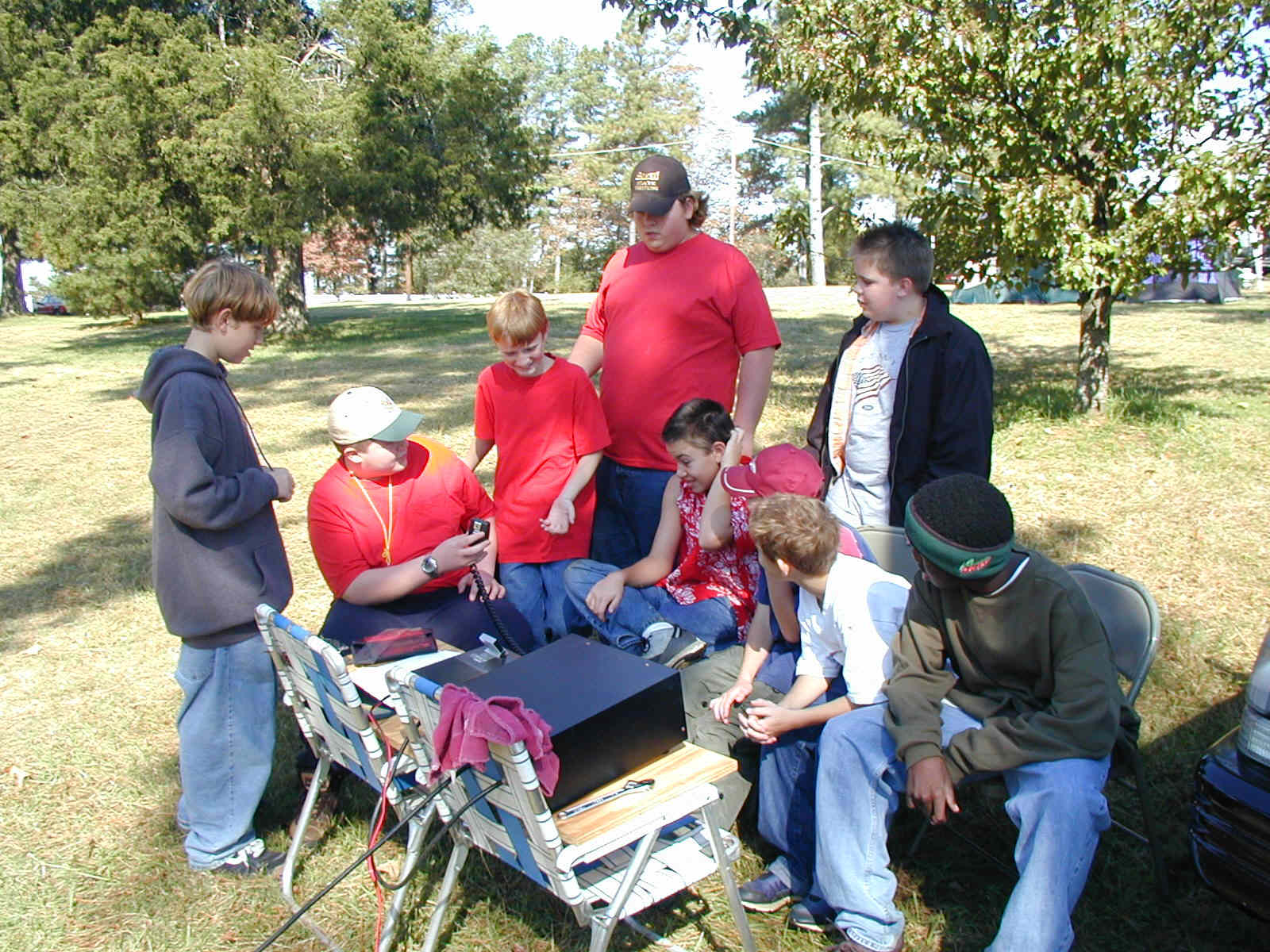
A helping hand
One of the older Scouts teaching the younger Scout how to key the microphone before talking.
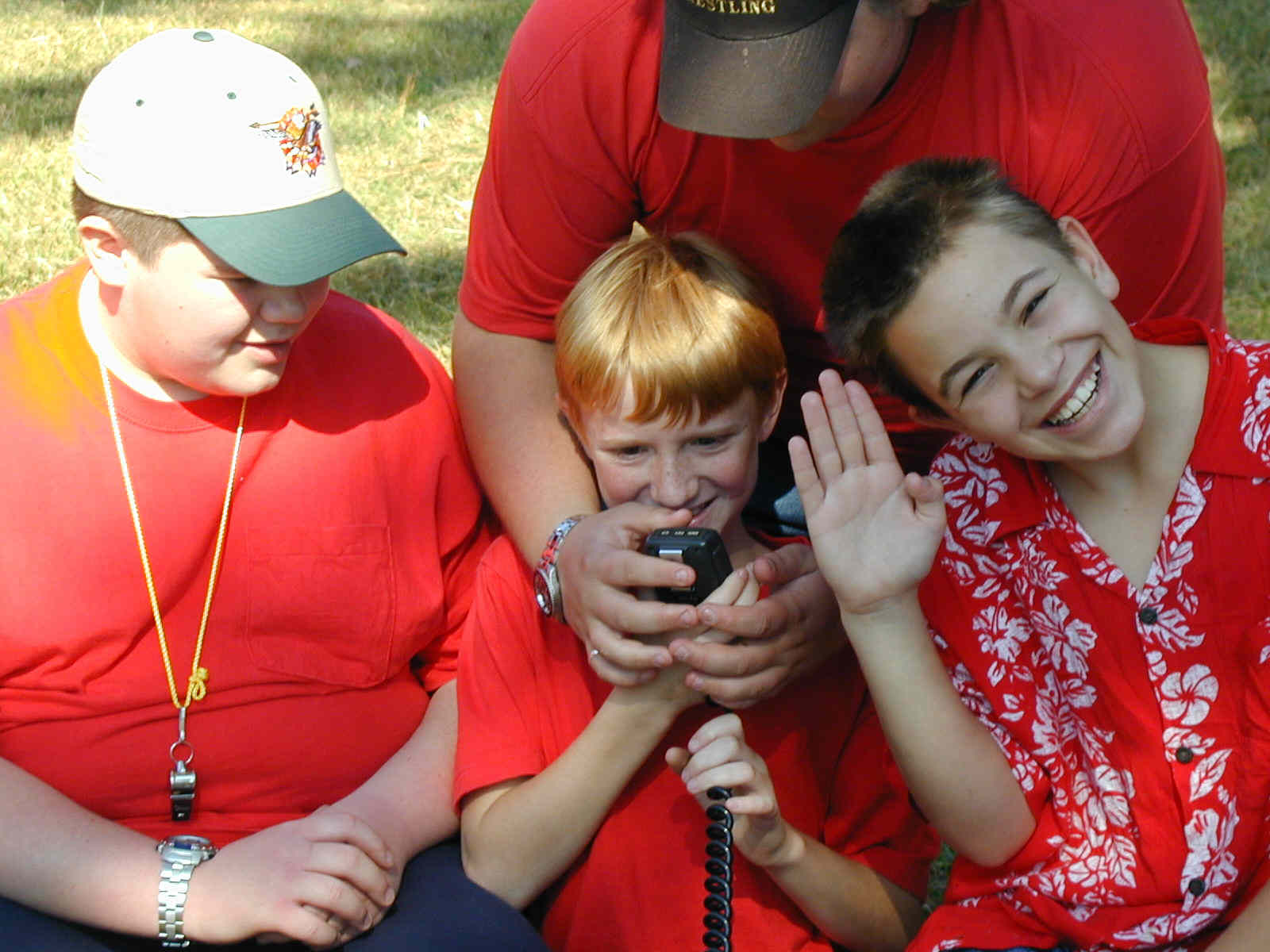
The Brotherhood of Scouts
This little guy is getting the hang of how it works with the help and encouragement from the rest of Troop 86.
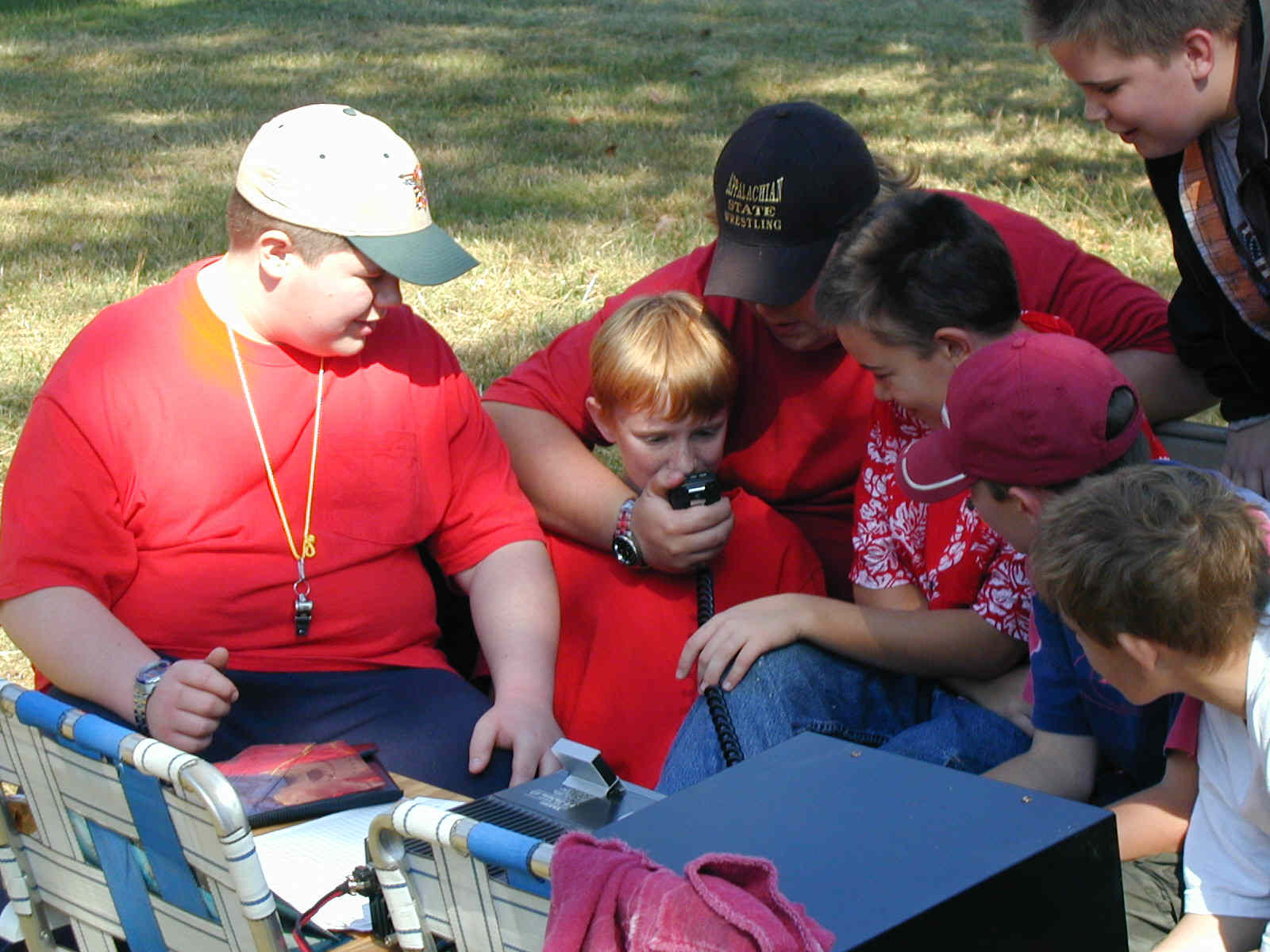
This page was last updated on 27-Oct-2001